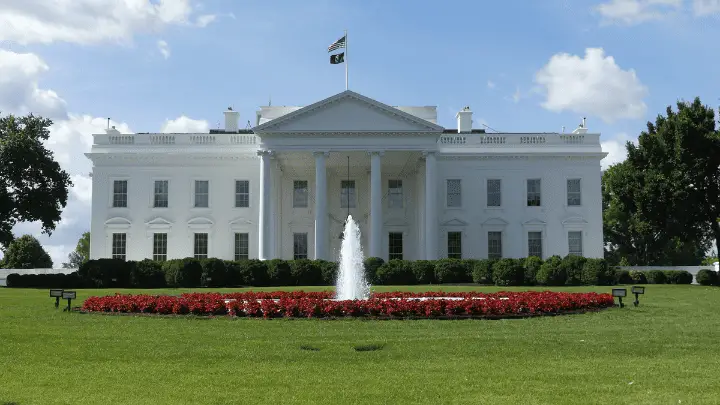Join me on a fascinating journey as we delve into the intricacies of a frequently ignored topic: who pays the president? In this article, I will unravel the complexities of presidential compensation and explore how it is funded.
You will also learn more about the historical context of the president’s salary, benefits, and expenses. By the end of this eye-opening exploration, you’ll have a comprehensive understanding of the sources of this compensation and the various factors that come into play.
So, let’s get started on this enlightening journey together.
The presidential compensation structure
The presidential salary – who pays the president
The first aspect to consider when addressing who pays the president is their salary. As the head of the United States government, the President is responsible for executing the laws and policies of the nation.
But a common question many people have is who pays the president of the United States. The answer is that the president’s salary and benefits are funded by the federal government, which means that taxpayers ultimately pay for them.
However, the president’s salary is not determined by the president himself or herself but by Congress, which sets the amount and can only change it for future terms of office.
It is worth noting that the President is one of many public officials whose salary and expenses are paid by taxpayers. Other high-ranking government officials, including members of Congress and federal judges, also receive salaries and benefits paid for by taxpayers.
However, the President is also responsible for paying for personal expenses, such as food and clothing. The President must also pay for any personal travel or recreational expenses.
Benefits and perks
The president also receives other benefits from the federal government, such as free housing in the White House, free transportation in Air Force One, and other vehicles. There is also free health care from the White House Medical Unit and security protection from the Secret Service.
After leaving office, the president receives a pension and other benefits, such as office space, staff, travel expenses, and health insurance. Understanding these benefits is key to comprehending the complete picture of presidential compensation.
Presidents can also receive donations from private individuals and organizations. These contributions often cover specific expenses, like campaign debts or the construction of presidential libraries.
In conclusion, the President of the United States is paid a salary by the federal government, and the taxpayers pay for his official expenses. While the President is responsible for paying for some personal expenses, most of his expenses are borne by the American people.

Historical context of presidential compensation
To truly comprehend the present-day presidential compensation, it’s essential to delve into the historical context.
The compensation structure for U.S. presidents has undergone significant transformations over the centuries, reflecting changes in the country’s economic, political, and social landscape.
Early days: A modest start
In the early years of the United States, presidential compensation was relatively modest. The Founding Fathers believed that serving as president was an act of civic duty and honor rather than a path to personal wealth.
As a result, the first president, George Washington, received a yearly salary of $25,000, a substantial sum at the time, but he often covered his expenses. Throughout the 19th century, presidential compensation went through several adjustments.
Presidents received salary increases, which were far from lavish by today’s standards. Abraham Lincoln, for example, faced the immense challenges of the Civil War while receiving a salary of $25,000 per year.
20th Century
The 20th century marked a significant turning point in presidential compensation. With the United States becoming a global superpower and the presidency’s responsibilities expanding, salaries needed to keep pace. The salary increased to $50,000 annually.
In addition, the salary increased to $75,000 a year from 1909 to 1948. The salary increased to $100,000 a year from 1949 to 1968, with Harry S. Truman being the first President to receive this amount.
In 1969, the US President’s salary was raised to $200,000 and continued till 2000.
Recent History
In contemporary times, presidential compensation has increased substantially to ensure that the president can maintain the expected level of prestige and dignity. From 2001, the annual presidential salary was $400,000, with an additional currently set $50,000 in expenses.
This substantial compensation helps presidents address their official duties without personal financial strain. It’s important to note that presidential compensation doesn’t solely consist of the official salary.
It also includes various benefits, such as access to the White House, Camp David, Air Force One, and a generous travel budget. The historical evolution of presidential compensation reflects the changing nature of the presidency and the economic conditions of the times.
Today, the President of the United States receives a compensation package designed to meet the demands and expectations of the highest office in the land.
Understanding this historical context helps us appreciate the complexity of presidential compensation and its role in supporting the president’s ability to lead the nation effectively.
The President’s Role in Determining Compensation
Presidential raises
The President of the United States can suggest modifications to their salary, but Congress must approve any such proposal before it can take effect.
This process is in place to ensure transparency and accountability in the decision-making process related to the President’s compensation.
It is important to note that the President’s salary is determined by law and is subject to periodic adjustments based on inflation and other factors.
Personal wealth
It is not uncommon for individuals who have accumulated significant personal wealth to be elected as Presidents. This noteworthy fact has raised concerns about potential conflicts of interest and ethical considerations, particularly about compensation decisions.
Given their financial backgrounds, Presidents may have different priorities and attitudes toward compensation, which could impact their decision-making processes.
The public’s role
The public’s role in determining the president’s compensation extends beyond simply casting votes. Taxpayers indirectly fund the president’s salary, benefits, and other expenses through their contributions to the federal budget.
The amount of compensation the president receives is determined by Congress and can vary based on factors such as inflation and the cost of living. Ultimately, every taxpayer has a stake in the president’s compensation and should be aware of how their contributions are being allocated.
FAQs
Can a president decline their salary?
Yes. A president cannot accept their salary, although most have accepted it.
Do former presidents receive compensation after leaving office?
Yes. Former presidents receive pensions and other benefits to support their post-presidential life.
Are there limits on private donations to presidents?
Yes, there are limits on private donations to prevent undue influence on presidential decisions.
Can the public directly vote on the president’s salary?
No. The public cannot directly vote on the president’s salary, as Congress determines this.
Final Thoughts
In conclusion, delving into who pays the president requires a comprehensive understanding of the intricate system of presidential compensation.
It involves an intricate combination of various funding sources, including taxpayer dollars, private donations, and the public’s role in the democratic process.
By examining these different aspects in detail, we can develop a more nuanced understanding of the complexities involved in compensating the president for their services to the nation.
By doing so, we can gain a deeper appreciation for the intricate mechanisms that underlie the financial support of the highest office in the land.
You can also learn more about why banks have many vice presidents.
Thanks for reading.







